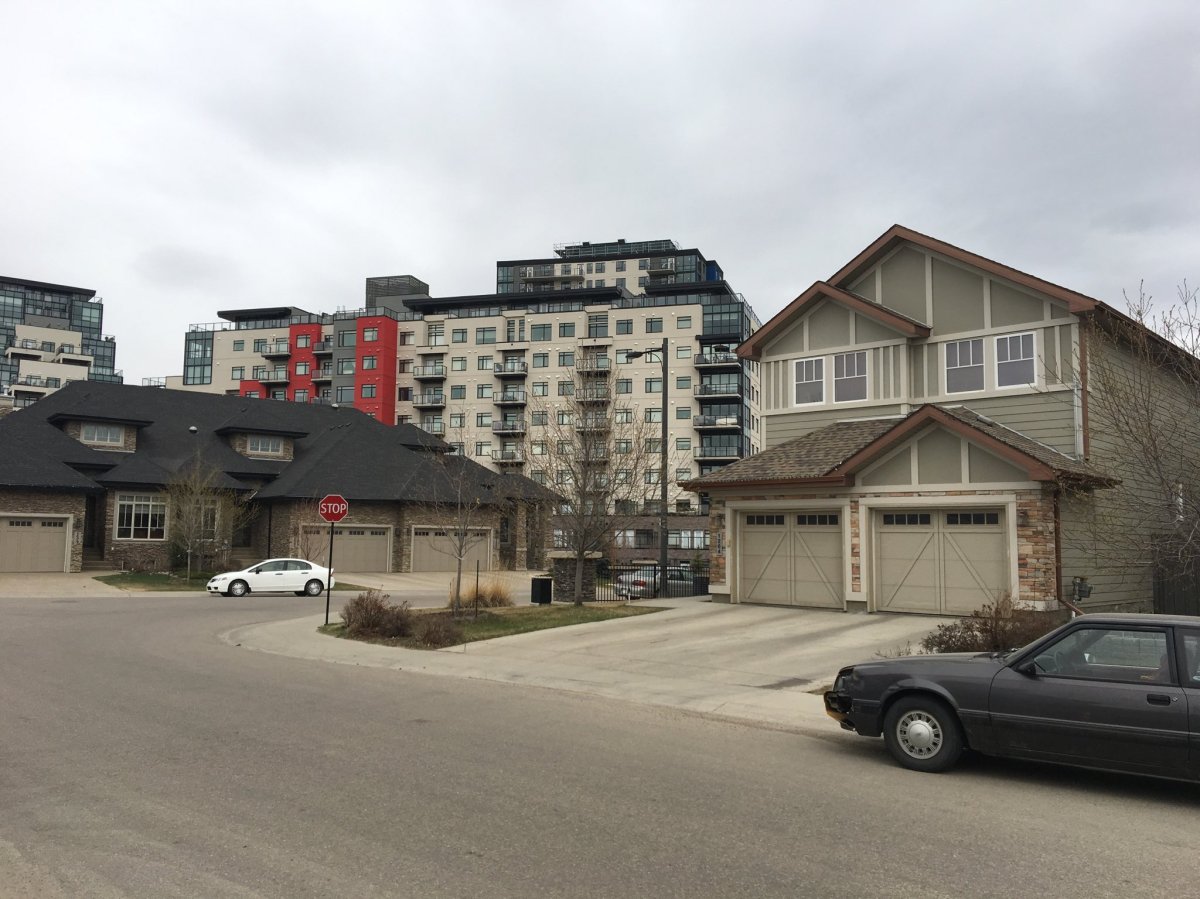Amid an ongoing narrative that Edmonton needs more infill and to build up — not out — a group of businesses argues dense suburbs filled with all styles of homes don’t cost the city money.
On Tuesday, BILD Edmonton Metro and industry leaders released their Urban Growth Case Study, which they said is a data-driven look at how urban expansion is impacting Edmonton’s economy, infrastructure, and communities.
“There’s been a rhetoric that growth costs too much money and we can’t afford to grow,” said Katrina Rowe, the president of homebuilder Cantiro Homes and BILD Edmonton Metro Board Chair.
“Some of our current council believes we can’t afford to grow.”
BILD is a non-profit development and construction advocate, calling itself “the voice and expert resource for the real estate development industry in the Edmonton metro region.”
The report examined two of Edmonton’s fastest-growing regions — Heritage Valley and Windermere, both in the city’s southwest — to assess how growth is being funded, the infrastructure being delivered, and what it means for the city’s long-term fiscal health.
Both areas have been under development for about three decades and are filled with tens of thousands of single family homes, townhouses, duplexes, apartment and condo buildings and in Windermere’s case, a handful of tall residential towers.
BILD argues new developments such as those two have great value and generate more tax revenue than maintenance costs.
Single family homes and high-density complexes exist side-by-side in the southwest Edmonton communities of Ambleside and Windermere. May 3, 2018.
Vinesh Pratap, Global News
BILD said the billions of dollars spent by developers in the two suburb communities is expected to produce a few hundred million dollars in tax revenue for the city.
According to the study, to fully build out both areas of the southwest comes with a price tag of over $3.2 billion in private sector investment to build not just homes, but the surrounding infrastructure like roads, stormwater systems, drainage and landscaping.
Both developments south of Anthony Henday Drive and west of the QEII are expected to be home to more than 171,000 residents once finished.
“We need to be planning for future growth,” Rowe said.
“All of our future growth can’t be housed in infill. We believes there is a place for infill and growth in mature communities, and there also needs to be growth in new communities.”
At full buildout all the way south to 41 Avenue S.W., the study found the two areas will generate approximately $309 million in property taxes for the city annually (not including the education tax portion.)

Once finished and turned over to the city, the study claims it will cost $14 million and $9.7 million to maintain the area’s roads and parks, respectively.
“Our study shows that we are profitable and new communities aren’t costing the city money,” Rowe said.
The study said within Heritage Valley and Windermere, the City of Edmonton collects 77 per cent of its tax revenue from residential development, 17 per cent from commercial or industrial, properties, and six per cent from multi-residential buildings like apartments.
After the education portion transfers to the Province of Alberta, the City of Edmonton currently collects over $163 million dollars annually from Heritage Valley and Windermere, BILD said.
Sandeep Agrawal is an urban planning expert and argues not everyone wants to live in the city’s core.
But is the City of Edmonton buying it? Morgan Black explores that in the video above.








